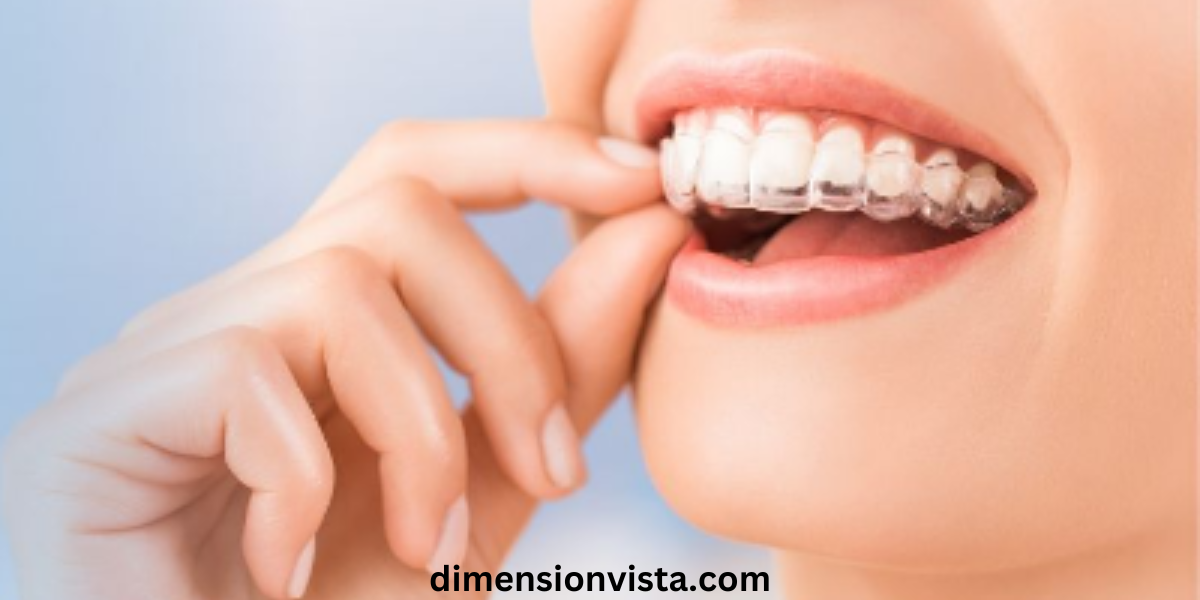A confident smile can enhance self-esteem, improve social interactions, and contribute to overall well-being. However, many people struggle with dental misalignment, which can affect both aesthetics and oral health. Traditional braces have long been the go-to solution, but modern advancements in orthodontics offer a more discreet, comfortable alternative: Invisalign.
In this article, we’ll explore how Invisalign transform your smile, addressing its benefits, effectiveness, and suitability for different dental conditions. If you’re considering orthodontic treatment, this comprehensive guide will provide the insights you need to make an informed decision.
What Is Invisalign?

Invisalign is a revolutionary orthodontic treatment that uses a series of custom-made, clear aligners to gradually straighten teeth. Unlike traditional metal braces, these aligners are virtually invisible, removable, and designed for maximum comfort.
How Invisalign Works
- Initial Consultation – A dentist or orthodontist assesses your teeth and creates a personalized treatment plan.
- 3D Digital Scan – Advanced imaging technology is used to map out the gradual shift of your teeth.
- Custom Aligners – A series of clear, BPA-free plastic aligners are designed to be worn for 20-22 hours per day.
- Regular Progress Checks – Patients receive a new set of aligners every 1-2 weeks to continue the gradual alignment process.
- Final Retention Phase – After the treatment, retainers are used to maintain the newly aligned teeth.
Benefits of Invisalign
1. Discreet Appearance
One of the biggest advantages of Invisalign is its nearly invisible design. The clear aligners allow users to straighten their teeth without drawing attention to their orthodontic treatment.
2. Comfortable and Non-Intrusive
Unlike traditional braces with metal brackets and wires that can cause irritation, Invisalign aligners are smooth and custom-fitted for comfort.
3. Removability for Convenience
Patients can remove their aligners while eating, drinking, brushing, and flossing. This not only improves oral hygiene but also eliminates dietary restrictions associated with metal braces.
4. Faster Treatment Time
Depending on the complexity of the case, Invisalign treatment typically takes between 12 to 18 months, which is often shorter than traditional braces.
5. Fewer Dental Visits
With Invisalign, progress check-ups are usually scheduled every 6-8 weeks, making it a convenient choice for individuals with busy lifestyles.
Who Is a Good Candidate for Invisalign?
Mild to Moderate Misalignment
Invisalign is highly effective for treating mild to moderate dental issues such as:
- Crowded teeth
- Gaps between teeth
- Mild overbites, underbites, and crossbites
- Minor tooth rotations
Severe Orthodontic Cases
While Invisalign can address many alignment concerns, complex cases may require traditional braces or additional orthodontic treatments. Consulting with an orthodontist will help determine the best option for your needs.
Invisalign vs. Traditional Braces
| Feature | Invisalign | Traditional Braces |
|---|---|---|
| Appearance | Nearly invisible | Noticeable metal brackets |
| Comfort | Smooth, custom fit | Can cause irritation |
| Removability | Yes | No |
| Oral Hygiene | Easier (can brush and floss normally) | More difficult (wires and brackets) |
| Treatment Duration | 12-18 months on average | 18-24 months on average |
| Suitability for Complex Cases | Mild to moderate cases | Effective for all cases |
Common Concerns About Invisalign
1. Does Invisalign Hurt?
Patients may experience slight discomfort when switching to a new set of aligners, but this is usually temporary and less painful than traditional braces.
2. Is Invisalign More Expensive?
Invisalign costs vary depending on treatment complexity and location but are often comparable to traditional braces. Many dental insurance plans cover Invisalign treatment, and flexible payment plans are available.
3. Can Invisalign Fix Severe Bite Issues?
In some cases, additional attachments or refinement aligners may be needed to address complex bite issues. A consultation with an orthodontist can determine the best approach.
4. How Often Should You Wear Invisalign?
For optimal results, aligners must be worn for at least 20-22 hours per day, only removing them for eating, drinking, and oral hygiene.
Maintaining Your Invisalign Results
1. Use Retainers
After completing Invisalign treatment, wearing retainers helps maintain the alignment of your teeth.
2. Maintain Good Oral Hygiene
Regular brushing, flossing, and professional cleanings will keep your teeth and gums healthy.
3. Avoid Bad Habits
Limit sugary foods and beverages that can cause cavities, and avoid habits like nail-biting that could impact alignment.
Conclusion
Invisalign offers a discreet, comfortable, and effective way to straighten teeth and enhance your smile. With advantages such as removability, ease of maintenance, and shorter treatment duration, it has become a popular choice for individuals seeking a modern orthodontic solution.
If you’re considering Invisalign, schedule a consultation with a qualified dentist or orthodontist to discuss your unique needs and treatment options. A beautiful, confident smile is within reach!

